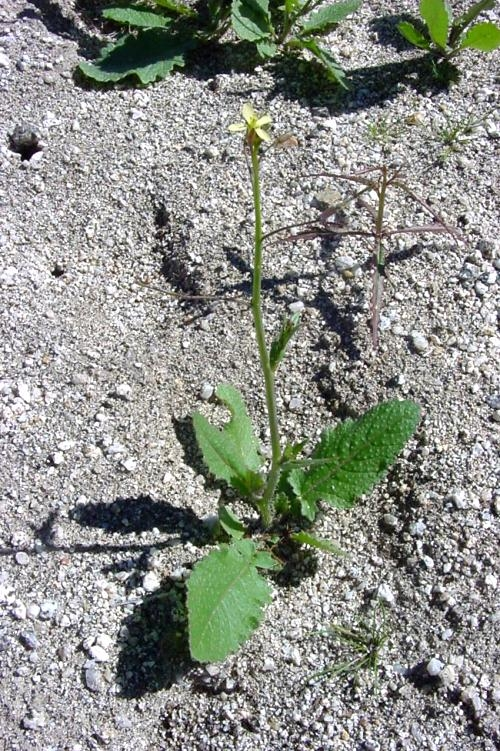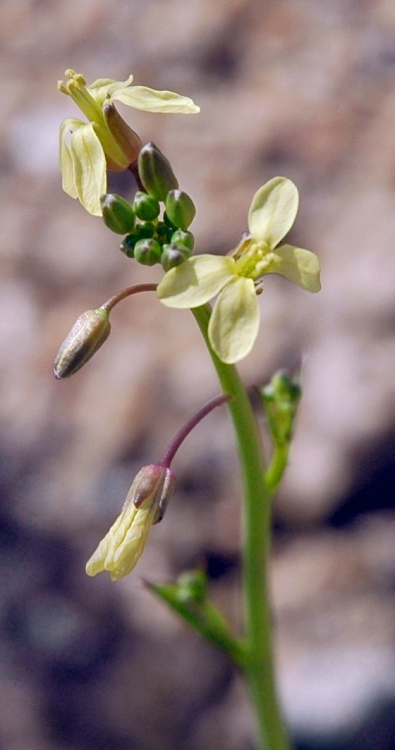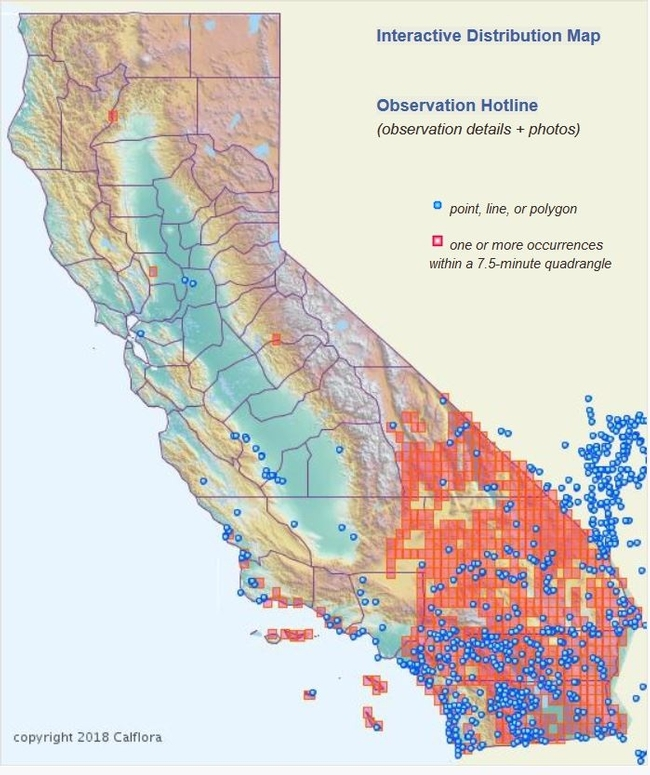
Saharan mustard has been documented in eastern San Benito County on Panoche Road; in western Fresno County; in Monterey County at Fort Hunter Liggett; and in San Luis Obispo County it is concentrated near Morrow Bay and north of Santa Maria, but has been identified elsewhere as well. Below is an image from the CalFlora website showing documented locations of Saharan Mustard. For the interactive version of the map, click here to go to CalFlora then you can click on individual observations to get more detailed information.
The plants bloom from January to June (Ihsan 2012). It is not known how long the seeds can live in the soil, but scientists think they can survive for many years.

If you see this plant please let me know. You can email me at drorao@ucanr.edu or call me at 831-637-5346 x14. If you have a plant that looks like Saharan mustard, but you're not sure if that's what it is, you can bring (or mail) the plant to my office and I can identify it for you. My office is located at 3228 Southside Road, Hollister, CA 95023, right next to the Ag Commissioner's office.
For more information about Saharan mustard and how to control it click here for the UC Weed Report.
All information for this article comes from DiTomaso, J.M., G.B.Kyser et al. (2013), unless otherwise noted.
References
CalFlora. 2018. Calflora: Information on California plants for education, research and conservation,
with data contributed by public and private institutions and individuals, including the Consortium of California Herbaria. [web application]. 2018. Berkeley, California: The Calflora Database [a non-profit organization]. Available: http://www.calflora.org/ (Accessed: Feb. 12, 2018).
DiTomaso, J.M., G.B. Kyser et al. 2013.Weed Control in Natural Areas in the Western United
States. Weed Research and Information Center, University of California. 544 pp. http://wric.ucdavis.edu/information/natural%20areas/wr_B/Brassica_tournefortii.pdf accessed February 12, 2018.
Ihsan A. Al-Shehbaz. 2012. Brassica tournefortii, in Jepson Flora Project (eds.) Jepson eFlora, http://ucjeps.berkeley.edu/eflora/eflora_display.php?tid=16085, accessed on February 12, 2018.
Author - San Benito County Director and Area Livestock and Natural Resources Advisor
Attached Images:
